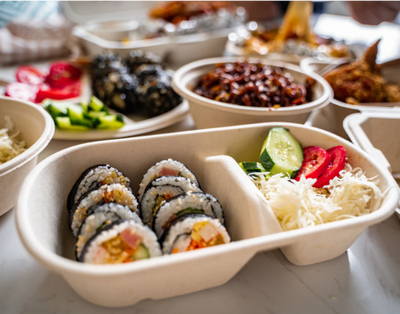Take a look around your home—the kitchen, the bathroom, the laundry room. Chances are, you’ll spot plastic everywhere. From food packaging and storage to toothbrushes and shampoo bottles, plastic has quietly become the backbone of modern households. The problem? Most of it ends up in landfills, oceans, or as microplastics in our environment.
The good news is that transforming your home into a low-waste space is easier than you think. With a few simple swaps and mindful habits, you can drastically cut down on your plastic use while saving money and creating a healthier living environment.
This guide will walk you step by step through the process—starting with an honest look at your habits and ending with a new mindset that embraces sustainability at home.
The Home Plastic Audit 🔍
Before you can reduce waste, you need to understand where it comes from. That’s where a plastic audit comes in.
How to do a quick home audit:
-
Collect your trash for a week. Separate recyclables, compostables, and landfill waste.
-
Identify repeat offenders. Is it food packaging? Water bottles? Toiletry bottles?
-
Prioritize by volume and frequency. Focus first on the items you use most often—those swaps will make the biggest impact.
Most households find that the majority of their plastic waste comes from three areas: the kitchen, the bathroom, and laundry products. These are the best places to begin your journey.
The Kitchen: The Heart of the Problem 🍴
The kitchen is often the single largest source of household plastic waste. From cling wrap to plastic utensils, it’s where convenience tends to outweigh sustainability. Fortunately, this is also where the easiest swaps exist.
Simple kitchen swaps:
-
Reusable food storage containers: Replace single-use plastic bags with glass or stainless steel containers.
-
Beeswax wraps or silicone covers: Ditch cling film and aluminum foil. Beeswax wraps keep food fresh and are reusable for months.
-
Bulk buying and refill stations: Reduce packaging waste by buying dry goods, spices, and snacks in bulk using your own containers.
-
Reusable straws and cutlery: Swap single-use straws and cutlery for long-lasting alternatives. Compostable versions from EQUO—made from sugarcane, coffee grounds, or rice—are great for on-the-go.

-
Filter instead of bottled water: Invest in a water filter to eliminate the need for plastic water bottles.
Not only do these swaps reduce waste, but they also save money over time and give your kitchen a cleaner, more organized feel.
The Bathroom Makeover 🚿
Bathrooms are deceptively plastic-heavy. Shampoo, soap, toothpaste, and razors often come wrapped in multiple layers of plastic packaging. But with the rise of sustainable personal care, there are now eco-friendly alternatives that work just as well (if not better).
Plastic-free bathroom swaps:
-
Bar soap and shampoo bars: Replace bottled body wash and shampoo with package-free bars that last longer.
-
Bamboo toothbrushes: Billions of plastic toothbrushes are discarded every year. Bamboo handles are compostable and a simple swap.
-
Refillable dispensers: For lotions, soaps, or conditioners, use refill stations or purchase in bulk.
-
Plastic-free razors: Switch to safety razors with replaceable blades—durable and cost-effective.
-
Eco-friendly toothpaste tablets: Many come in glass jars or paper packaging instead of plastic tubes.
These swaps not only reduce bathroom waste but often introduce you to cleaner, more natural products with fewer harmful chemicals.
Beyond the Swaps: A New Mindset 🌱
Practical swaps are a great start, but creating a low-waste home requires a shift in mindset. It’s about rethinking habits, not just products.
Adopt these principles for long-term change:
-
Refuse single-use plastics whenever possible—say no to plastic bags, cutlery, or straws when dining out.

-
Reduce by buying less overall. Minimalism naturally lowers waste.
-
Reuse items creatively—jars, bottles, and containers can all have second lives.
-
Support sustainable brands that prioritize compostable packaging and eco-friendly practices. Choosing companies like EQUO, which focus on plant-based, plastic-free alternatives, helps shift the market toward sustainability.
Changing your mindset from “disposable” to “reusable” creates ripple effects beyond your home. It influences your shopping habits, your community, and even inspires others to follow your lead.
A Positive, Lasting Impact 🌍
Every small swap adds up. One household switching to reusables might feel minor, but multiply that by thousands of families and the impact becomes transformational.
The benefits of reducing plastic at home include:
-
Less waste in landfills and oceans: Each item you refuse or reuse is one less piece of plastic polluting the planet.
-
Financial savings: Reusable products last longer, cutting down on repeat purchases.
-
Healthier living: Reducing plastics reduces exposure to microplastics and harmful chemicals found in packaging.

-
Inspiring change: Friends, family, and children often adopt what they see in your home—your actions can spark broader change.
Creating a plastic-free home isn’t about perfection—it’s about progress. Even the smallest effort makes a difference, and over time, those efforts add up to a healthier home and planet.
Conclusion
Plastic has become woven into the fabric of our daily lives, but it doesn’t have to stay that way. By starting with a plastic audit, focusing on high-waste areas like the kitchen and bathroom, and adopting a mindset that prioritizes reusables and responsible consumption, you can make your home a low-waste haven.
The transition doesn’t happen overnight. It’s about small, consistent steps—like choosing a compostable straw from EQUO instead of plastic, or swapping bottled soap for a bar—that gradually reshape your lifestyle.
Because when you rethink waste at home, you don’t just reduce your plastic use—you set an example for your community, protect future generations, and prove that sustainability begins in the simplest of places: your own four walls.


